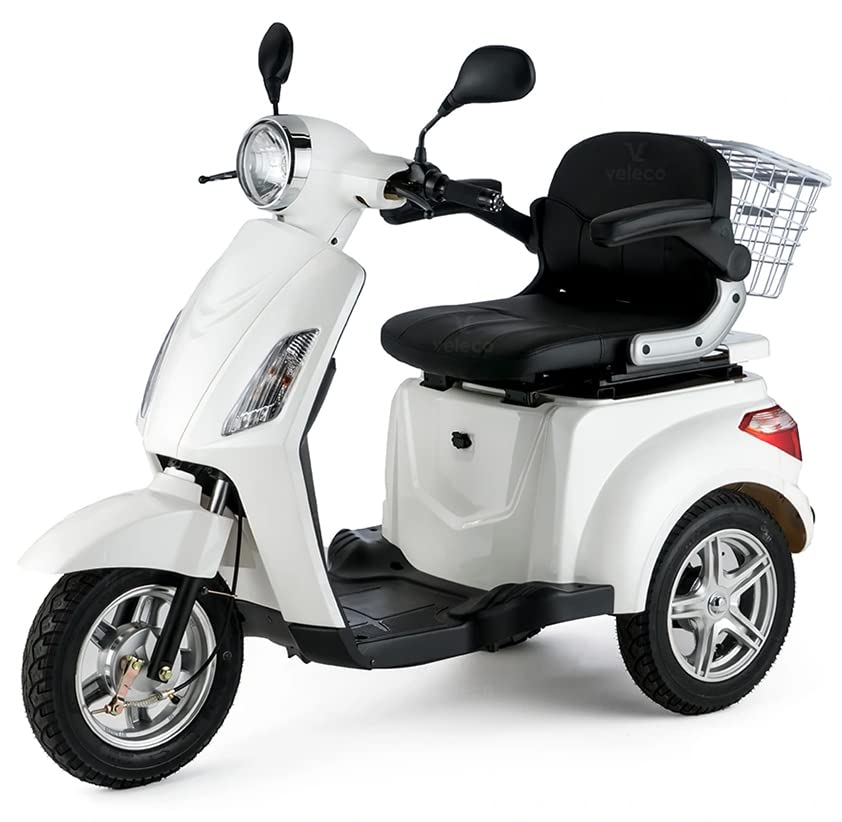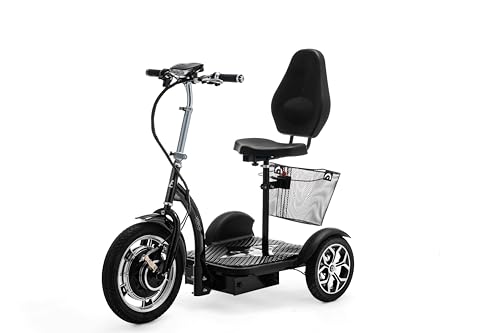A Good Rant About Road Legal Mobility Scooters
페이지 정보

본문
 road mobility Legal Mobility Scooters
road mobility Legal Mobility ScootersSome seniors use mobility devices to complete around, which can eliminate the need for assisted-living facilities. It is important to be aware of the laws and regulations that govern their operation in each state.
Mobility scooters should be used on sidewalks and walkways for pedestrians and should follow the same rules for pedestrians. They should obey traffic signals and signs, grant pedestrians the right of way and use audible warning devices to signal their presence to other road users.
Arkansas
While a new law makes road legal mobility scooters more common in Arkansas however, the state has a few rules concerning their use. It is illegal to use a scooter on certain roads. This includes federal highways, interstate highways, and local roads. Users should therefore focus their travels on local streets and pathways. It is also crucial to observe all traffic laws when using scooters. This includes obeying traffic rules and stopping at stop sign. Also, it's important to yield to pedestrians at crossings.
Mobility scooter riders should consider their safety and the safety of other road users. Wearing helmets and keeping an appropriate speed when riding on public roads is crucial. They should also ensure that their scooters are parked in designated areas and don't obstruct pedestrian traffic. Additionally they should report any problems with their scooters to the City through SeeClickFix.
The majority of states allow escooters ride on any surface that allows bicycles, including bike lanes or streets. However some cities require they be used on sidewalks only when there isn't a bike route accessible and that pedestrians have the right to use the right of way. Additionally, most states require helmets for all scooter riders.
California
In California the state of California, escooters are categorized as motor vehicles and are subject to the same rules as cars. Operators must be 16 years old and possess a valid driver’s license or learner's permit. They must also obey traffic laws and wear helmets at all time. This is a vital measure to ensure the safety of scooter users and pedestrians.
California, unlike other states does not require scooters to be insured or registered provided they have a motor of less than 750W and can travel up to 20 miles per hour. Scooters also need to have working lights and reflectors in order to improve visibility in low light conditions. Scooters shouldn't also block access to fire hydrants or loading zones.
Mobility scooters are also permitted to use sidewalks, however they must be used with special consideration for pedestrian safety. They must operate at a reasonable speed and yield to pedestrians when they are in crossings. They should also abide by traffic signals and travel as close as they can to the right-hand side. Furthermore they should not block or hinder sidewalks, walkways, or intersections. They should also not operate their scooters along interstate or state highways.
Illinois
Montana's laws permit mobility scooters to be used on walkways and sidewalks for pedestrians. This gives them greater accessibility and independence. However, they are not allowed to be driven on public roads, since they are designed to handle pedestrian traffic and are not able to withstand the speed of vehicular travel.
Tennessee law classifies mobility scooters On road or pavement - https://morphomics.science, scooters as electric Personal Assistive Devices (EPAMDs) that are similar to wheelchairs and walkers. This means that they can be used on pedestrian walkways, sidewalks and designated pedestrian areas. Scooter users must be aware of their surroundings, and follow any local rules that may be in place. For example, they must yield to pedestrians or use audible signals when they are attempting to pass another pedestrian.
Illinois's laws regarding mobility scooters require that operators wear a helmet, regardless of their age, and be accompanied at all times by a person who is over 18. The state also requires that scooters come with reflectors and lights to improve visibility and avoid accidents in low-light conditions.
Scooters must be located in designated areas. They should not hinder pedestrian paths or road users. Furthermore, they must comply with the same traffic rules as bicycles, including obeying traffic signals and giving way to pedestrians. It is also recommended that users of mobility scooters to take safety courses in order to encourage responsible use of these vehicles and reduce accidents.
Massachusetts
In Massachusetts, mobility scooters are classified as electronic personal assistive mobility devices (EPAMDs) and do not require registration or insurance. However, users are required to comply with local traffic laws and regulations. This includes obeying traffic signals, keeping an appropriate distance from other vehicles and yielding to pedestrians when on sidewalks or walkways for pedestrians.
EPAMDs are allowed to operate on sidewalks, making it an efficient way for people who are unable to walk to move around. The state also requires users to keep a steady pace when operating their scooters within pedestrian zones. This ensures that they aren't a risk to other people and obstruct traffic. EPAMDs must also be equipped with working reflectors and lights to increase visibility in low-light conditions or during the nighttime.
Virginia does not require drivers' licenses or insurance for mobility scooters. However it is recommended that users use their scooters with security precautions. Wearing a helmet and following all traffic laws and regulations is a key part of this. Also, make sure that your scooter is in good condition. Scooters are only permitted to be used on roads that have a speed limit of 30 miles per hour or less. They must also remain as close as they can to the right of way and allow pedestrians and cyclists the right of way.
North Carolina
In North Carolina, a scooter is considered a motorized vehicle if it is equipped with an engine that generates at least 50 cubic centimeters displacement. It should also be able to reach speeds of 25 miles per hour and higher. A scooter that meets the above requirements must also be insured and possess an active driving license. Despite these limitations, the majority of mopeds and scooters can be legally operated in the state so long as they are covered by insurance coverage.
Mobility class 3 scooters can be used on sidewalks, other pedestrian walkways, and public buildings, as in the sense that they don't block pedestrians or block access. It is nevertheless important for users to be aware of their surroundings and exercise caution in crowded areas. They should always be courteous to pedestrians and use crosswalks where applicable. They must also observe the traffic and parking rules.
In general, the majority of states have similar rules and guidelines for mobility scooters. They can differ however in terms of the age and licensing requirements, speed limits, and whether or not helmets are required. The best class 3 mobility scooter way to ensure that you are in compliance with these rules is by familiarizing yourself with the laws that apply to your area.
Nevada
In Nevada, mobility scoots are exempt from Department of Motor Vehicles' (DMV) registration and licensing requirements. However, they are regulated under state law to ensure user safety and compliance with local traffic laws. Understanding these rules will allow users to confidently operate their scooters in the correct manner and avoid penalties.
In particular, the laws of the state provide that mobility scooters are able to be operated on sidewalks and pedestrian walkways. They are allowed to move at a speed similar to that of pedestrian traffic. They should be respectful of pedestrians and obey all traffic signals. This will promote safety for both users and pedestrians in pedestrian areas.
The statutes also state that mobility scooters cannot be allowed to be operated on roads unless there's no sidewalk that is accessible. If such a situation arises, the scooter should be placed close to the right curb or edge of the road. It should always operate at a slower speed than the speed of traffic.
In addition to complying with state laws, mobility scooters should be equipped with vital safety features, including functional lights and reflectors, to ensure visibility in various situations. Nevada does not require helmets or special insurance, but riders are encouraged to use them to ensure their security and comfort.
Wyoming
As more people use mobility scooters to move around it is crucial that there are state laws that govern their use. These laws should provide scooter users with a safe, accessible environment while ensuring the safety of all sidewalk and road users. Additionally, these regulations should encourage proper maintenance of scooters in order to avoid any malfunctions that could endanger the user's safety.
In general, the regulations that govern the use of 8mph mobility scooters scooters requires riders to adhere to the same traffic rules that pedestrians do. This means yielding to pedestrians and exercising caution when crossing the crosswalks. Additionally, scooter operators should keep a safe distance from pedestrians and maintain a safe speed to avoid any dangers.
 The majority of states allow scooters on bike and roads lanes, as well as everywhere bicycles are permitted. However, they are not permitted from operating on highways or roads that have a high speed limit. Additionally, they are required to wear helmets and reflective materials to increase their visibility. In addition, they should refrain from tying themselves to vehicles moving or parking in areas that are a barrier to emergency exits. They should also avoid operating a motorized scooter under the influence of.
The majority of states allow scooters on bike and roads lanes, as well as everywhere bicycles are permitted. However, they are not permitted from operating on highways or roads that have a high speed limit. Additionally, they are required to wear helmets and reflective materials to increase their visibility. In addition, they should refrain from tying themselves to vehicles moving or parking in areas that are a barrier to emergency exits. They should also avoid operating a motorized scooter under the influence of.- 이전글Buy Goethe Certificate Online's History History Of Buy Goethe Certificate Online 25.04.11
- 다음글Why We Are In Love With Goethe Certificate Online (And You Should, Too!) 25.04.11
댓글목록
등록된 댓글이 없습니다.
